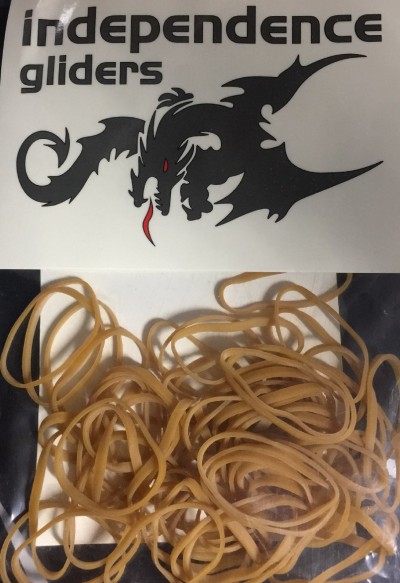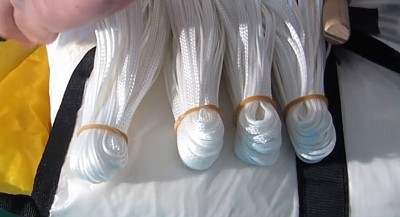ABOUT RESERVES / RESERVE PACKING & SAFETY
1. Packing and safety tips
2. New reserve - invention 2017
3. Choosing a reserve 3 types explained.
4. Videos - Reserves tested.
5. Live situations
6. Water landing
PACKING TIPS & SAFETY
Several safety factors to be aware of before re-packing your reserve. To ensure that it will open with fastest opening times. Your life could rely on that extra 1/2 sec.
Also note that a skydiving rigger generally would not be qualified or authorised to pack paraglider reserves. Skydiving reserves need to deploy at higher velocity and are quiet different to packing standard paraglidering reserves.
If you’ve been trained by a professional paragliding instructor you may PACK YOUR OWN RESERVE according to manufactures handbook.
1. Air your reserve before re-packing.
Airing is only recommended indoors in a controlled environment. If done outside in a field - moisture, insects or mirco segments get trapped these are often impossible to remove causing premature aging and degradation of the material slower opening times, or no opening at all.
Fling and swing is great fun if done indoors.
But still this doesn't replace a good 12hrs over night airing. Packing your reserve every 4 to 6 months is recommended when self packing.
Preperation (standard round cap)
Packing a reserve should be done on a clean hard surface. Avoid packing on carpet, because dirt, dust and static electricity which sucks all micro partials to it.
2. Use reserve rubber bands
Rubber bands used by the professionals.
They are made with a high rubber content.
Which reduces scorching and friction.
When storing keep in a dark place and controlled room tempurature environment. These rubber bands should be replaced every 12months.
You can buy reserve rubber bands here from Independence paragliders direct.
3. Size of rubber bands.
They should be placed not stretched over the ends of folded 8's. As seen in photo above.
4. Do a K-check after packing.
pK Stands for compatibility. Derived from the German language Kompatibilität. Therefore K not C.
All NEW invention 2017
Introducing the Diamond Cross ST
Steerable Square reserve
Fast opening times
Low sink rate
Light
Low volume
Easier to pack.
Attached glider won’t get in the way.
With many improvements over standard and Beamer3 Regallo.
BUYING A RESERVE
Reserves are made to save lives but that doesn't mean they are guaranteed to bring you down without injury.
A reserve passes certification with a max sink rate of 6.5 meters per second. It is recommend you buy a reserve with an extra 20kg over your weight range (DHV recommends 20% over full weight range) to help slow the decent down further.
Reserves ROUND or STEERABLE?
STANDARD ROUND - Everyone would have to agree to start with a round cap. They are small, cheep and do a good job although far from perfect. There designed to save lives but that doesn't mean you'll come down uninjured. The pendulum effect, speed of decent wind drift and glider has large disadvantages.
SQUARE RESERVE - Recommended above a round.
Manufactures are well aware of the dangers from pendulum effect, therefore they have created square reserves which stabilises the descent considerably beyond a standard round.
BRAND NEW INVENTION 2017
Square steerable reserve is here! Great price and our winner over the round / square or Regallo. DiamondCrossST from Charly Fensterwalder.
STEERABLE regallo and Beamer - Great as a second reserve. But being reported at SIV courses are proving not to be as reliable. They require a cut away system - which releases the glider and tend to often open twisted.
* Regallo sterable has a long opening time.
* Base skydiving steerable reserve requires specially made acro base harness from Supair or Ava Acro base canopy to automatically cut away glider.
For serious ACRO pilots a must with 2/3sec opening times.
These are more expencive, complex to repack tend to be bulkier and heavier in size.
Recommended for pilots who carry a second reserve. eg. Acro pilots, or those who do a lot of reserve throwing is highly recommend as a main reserve. Special cut away system required making it the most expensive setup.
RESERVE TESTS
Video 1 Compair: Regallo steerable / Round / Square.
Video 2. New base system
Video 3 Ava Harness and time deployment of Base.
Conclusion - Base canopy would be my choice but a special harness and skydiving canopy is required. Not made for XC harnesses. So let’s face it you just can’t go past this years new invention
Diamond Cross ST steerable square - problem solved along with or without quickout carabiners you’ll have the best of both worlds at much less cost.
LIVE SITUATIONS TIPS
THROW RESERVE IN TO CLEAR AIR It takes 2 actions to throw a reserve. 1. Pull handle to remove from harness then find clear air and throw it hard as is possible - "out and away". Not only does
one need to know which direction to pull on a reserve handle to free it out of the harness but in particular when using a front reserve also be aware where the V lines are running to get your arm, head, body out of the way.
OUT OF CONTROL - SPIRAL - RESERVE
If out of control and the glider goes into a spiral, this is a most serious situation, do not hesitate to throw your reserve quickly even if your high, the G forces can build up within seconds. It is known that G forces can beso extreme it may be impossible to reach for the handle never mind not even thinking you might of blacked out before that. Often pilots who have attempted to fix the situation before throwing have ended in fatality.
REEL YOUR GLIDER IN - Once your reserve is deployed. Take only D lines where you can. If that is failing take a tip. Lines will be everywhere. It is not as easy as one imagines. Your aim is to have your reserve open to let it fly undisturbed. Gliders cause the reserve to oscillate, spin and can get caught up in the reserve. This is what your trying to avoid by reeling your glider in.
WATER LANDING
Getting away from lines and harness is harder than you might think in a real life situation. A harness naturally turns you face down under water. You only have seconds to survive.
Most successful Test results made on Archensee Austria is to Fly into wind, then before hitting water, undo harness, hold on to the brakes, touch water with foot then jump in with brakes, swim away from all equiptment. Your helmet can help you keep afloat.
Originally Graham Tydeman wanted to test landing in water, with the wind. I described him the above theory into wind landing. See the outcome in his video. Water landing into wind tested live in Öludeniz. Also - in practice it works.
True story: In she went. Harness turned her in an instant trapped underwater lines tangled her legs. She was loosing her breath and just managed to get one leg strap undone. She turned and grabbed her harness, which kept her head just above the water. She was rescued and survived.
Avoid water landings, and even more importantly surf, branding or rivers.


